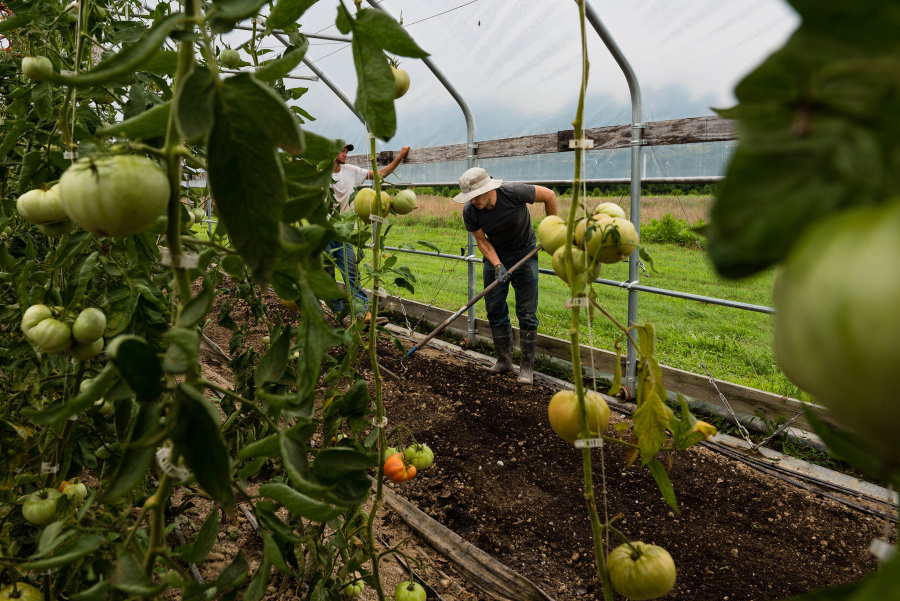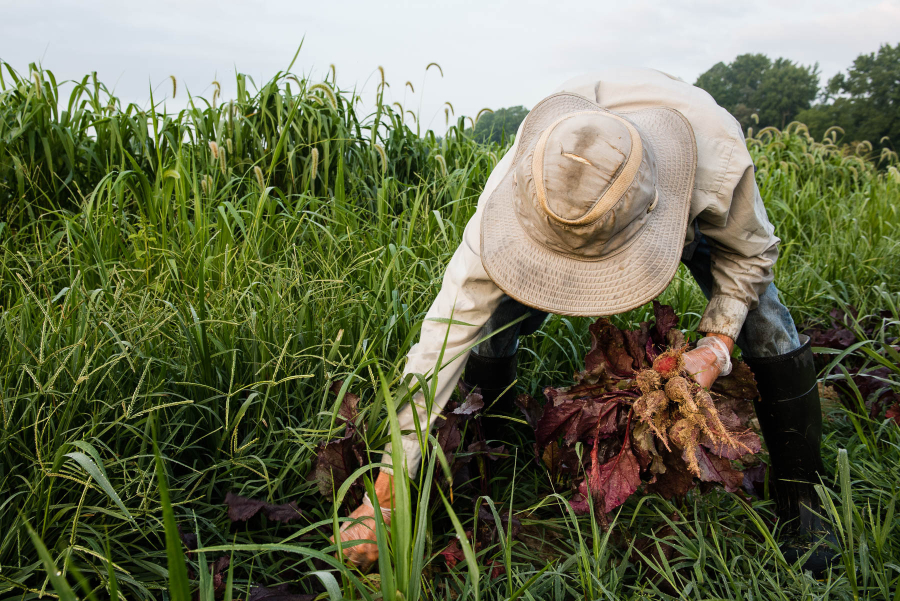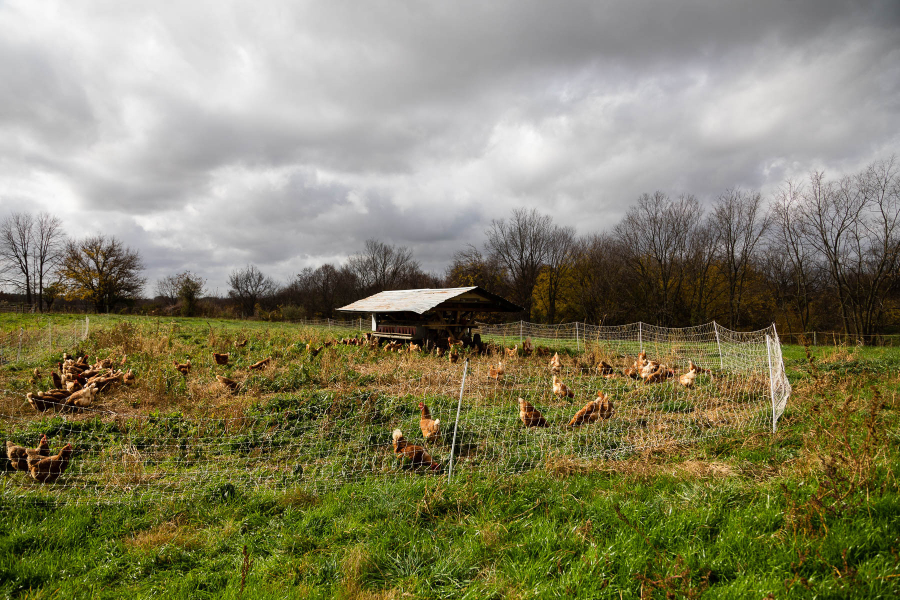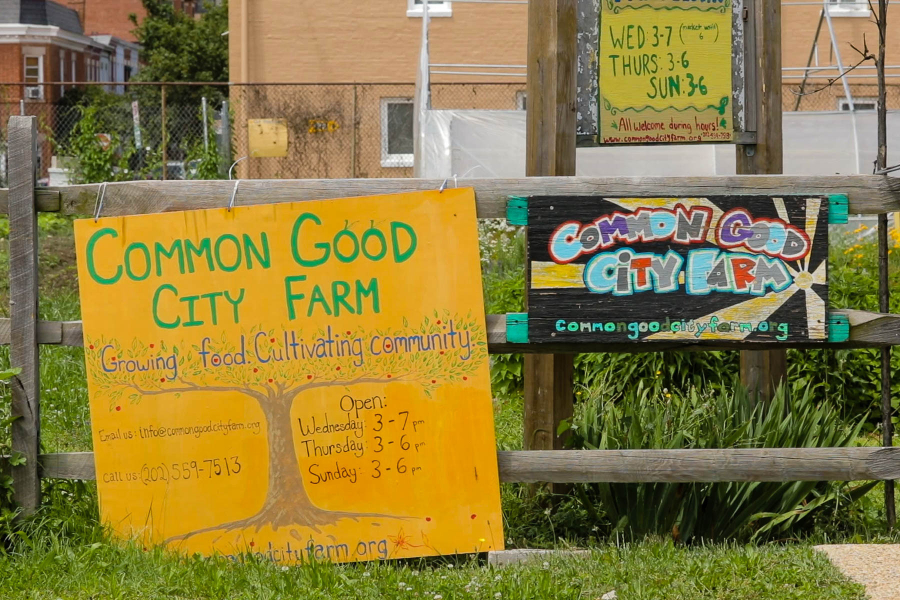Get to know these eight regenerative farms throughout the Bay watershed
These farms grow food in a way the protects local streams and rivers

It’s no doubt that agriculture is a big part of the Chesapeake Bay watershed. The region is home to more than 83,000 farms that take up almost 30% of the land—from the dairy farms of Pennsylvania to the chicken and poultry farms of the Delmarva region. While nutrient and sediment runoff from these farms is an ever-present concern, many farmers in the watershed have pivoted to practices like regenerative agriculture that help keep these pollutants in the ground and out of the Bay. Regenerative agriculture is nothing new, and many Chesapeake famers have been practicing some form of it for decades, but overall, it has only recently grown in popularity.
What is regenerative agriculture?
At its core, regenerative agriculture aims to improve the health and productivity of soil. By protecting the soil quality, you are also storing more carbon, keeping sediment from washing off the land, soaking up more nutrient runoff or reducing the need for fertilizer in general. This holistic approach to agriculture seeks to mimic natural ecosystems and involves a range of practices that promote soil health and biodiversity:
- Reduced tillage: This involves reducing or eliminating the amount of tilling or plowing of the soil, which can help to improve soil structure and reduce erosion.
- Cover crops: Planting cover crops, such as legumes or grasses, between other crops that you harvest can help to improve soil health by reducing erosion, increasing organic matter and providing habitat for beneficial insects.
- Crop rotation: Alternating the types of crops grown on a piece of land can improve soil health, reduce the incidence of pests and diseases, and promote biodiversity.
- Composting: Creating compost from crop residues, manure and other organic matter can help to improve soil health by increasing the amount of organic matter and nutrients in the soil.
- Livestock integration: Integrating livestock, such as cattle or sheep, into farming systems can help to promote soil health by cycling nutrients, controlling weeds and reducing the need for synthetic fertilizers.
Regenerative farms in the Chesapeake
Regenerative agriculture is growing in popularity in the Chesapeake region, especially in areas that are suffering from impaired streams and rivers. The below farms from across the watershed all incorporate some type of regenerative practices into their farming system.

Cottingham Farm
Located in Talbot County, Maryland, Cottingham Farm believes in growing healthy food for their customers, which they accomplish by practicing regenerative agriculture. They are a certified organic operation that sells produce and pasture raised chicken, pork and eggs. The farm keeps their hogs on certified organic pastures for their entire lives, which benefits the soil quality and makes the animals healthier. They have been using less conventional methods of farming such as using humate and mycorrhizal fungi to balance the bacterial fungi in the soil. You can buy their goods at their farm, the Easton Farmers Market and the St. Michaels Farmer Market.
Open Book Farm
When the Barnet family bought Open Book Farm in 2015, the land in Middletown, Maryland was entirely used for corn and soy production, which was keeping the property from having healthy biodiversity. Since then, the owners have planted roughly 140 acres of permanent certified organic pastures. Pigs, laying hens, turkeys and chickens all live outside on rotationally grazed pasture, and the feed used to supplement their grazing does not include genetically modified organisms (GMO). Their beef is 100% grassfed, and none of the animals ever receive added hormones, antibiotics or parasiticides. The owners are committed to protecting the Bay through different land management practices such as riparian tree plantings and no-till farming. Open Book Farm sells their products at the Petworth Community Farmers Market in Washington D.C., and at their farm.
Shepherd’s Whey Creamery
The owners of Shepherd’s Whey Creamery in Martinsburg, West Virginia, first switched to a grazing system for their goats to help diversify what their herd were eating and to reduce their feed bill. Soon, they found this practice was improving the soil quality, too. The Shepherd’s Whey herd is kept on open (herbicide-free and pesticide-free) pasture and are fed high protein hays, including alfalfa, orchard grass, clover and oat hay. The goats are free from added hormones, medicated feeds or other supplements. In 2012, Shepard’s Whey received their Grade A certification and food manufacturing permit to be able to sell their goat cheese at local farmers markets. Shepards Whey Creamery produces minimally processed goats’ milk, goat milk cheese and goatgurt (goat milk yogurt). You can find their products in the eastern panhandle of West Virginia, northern Virginia, Maryland and Washington D.C..

Rising Locust Farm
Rising Locust Farm is located in Manheim, Pennsylvania, which is in the southern Susquehanna River valley. The Rhodes family established Rising Locust Farm in 2015 and began using regenerative farming practices to grow their food and improve their soil. The farm produces eggs, lamb, beef and pork. Their laying hens use the pasture to forage and exercise, and are fed organic feed with herbs, minerals and probiotics. The lambs and cattle are grass fed and rotated daily to improve the health of the farm’s pastures. The hogs are raised in a mix of pasture and woods and are fed an organic feed supplement. Rising Locust also grows shiitake mushrooms on hardwood logs in the woods! They sell most of their products through a CSA or at their farm’s store.
Willowsford Farm
Willowsford Farm in Aldie, Virginia, is a 300-acre farm with plenty of forest cover. Livestock is raised on pasture and without hormones, antibiotics or GMO feeds. Willowsford uses organic farming practices and no synthetic fertilizers or pesticides. They also use regenerative practices like cover crops, crop rotation, compost, natural rock amendments and minimum tillage strategies. These practices allow Willowsford to maintain good soil fertility and to grow nutrient-dense crops. Willowsford products can be bought through a CSA, their online store or in-person at their farm store.
Sharon’s Natural Garden
Sharon’s Natural Garden is a homestead garden run by Sharon Carson and her family. They grow a wide variety of foods, flowers and herbs, as well as some hens for eggs and sometimes rabbits for meat and furs. The Carson’s have practiced regenerative methods in their garden for 40 years, along with making their own compost. The farm is located between two small tributaries of the Nanticoke River, which flows into the Bay. Most of their products can be purchased online through their website.

Common Good City Farm
A truly urban farm, Common Good City Farm is on a situated on a third of an acre in LeDroit Park in Washington, D.C. But what the farm lacks in size it makes up for in fresh food and community. The farm prides itself on a being a place where members of the community can buy food that’s locally grown, fresh and sustainable. The farm creates a multi-cultural, multi-racial, multi-generational community space through its events and hands-on training in food production, healthy eating and environmental sustainability. The farm’s market is open every Wednesday from 4-7 pm, mid-May through the end of October.
Bottomland Farm
Bottomland Farm is located in Binghamton, New York, and has been operating since 2016. Bottomland is a regenerative farm that produces pasture raised chicken, duck and pork, along with rabbit, log grown shiitake mushrooms, and eggs produced by ducks and chicken. Their primary goal is to grow high quality food for their local community, and they do that through farming in conjunction with nature. They practice rotational grazing and have planted 4.3 acres of trees along the stream that flows through their farm. You can find their products at a couple of different farmers markets in New York and they also offer delivery.
Have you been to any of these farms, or do you know of others in the Chesapeake Bay watershed that use regenerative practices? Let us know in the comments!

Comments
Excellent read and very informative!
Thank you!
Your comment has been received. Before it can be published, the comment will be reviewed by our team to ensure it adheres with our rules of engagement.
Back to recent stories